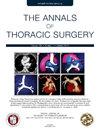心脏外科出血、输血和质量指标:术后强化恢复心脏学会和促进患者血液管理学会的联合共识声明。
IF 3.6
2区 医学
Q1 CARDIAC & CARDIOVASCULAR SYSTEMS
引用次数: 0
摘要
背景:围手术期出血过多与心脏手术的主要并发症有关:围术期出血过多与心脏手术的主要并发症有关,导致发病率、死亡率和成本增加:召集了一个国际专家小组,就出血控制和输血管理制定共识声明,并就心脏手术出血的关键质量指标提出建议。专家小组回顾了过去 10 年的相关文献,并采用改良的兰德德尔菲方法达成共识:结果:共形成了 8 个类别的 30 项共识声明,包括优先控制出血、胸腔闭合前检查单以及除再探查率(如再探查时间)以外的其他质量指标的必要性。在出血过多的通用定义、抗纤维蛋白溶解剂的使用、抗血栓药物的最佳停药时间以及根据患者和手术因素进行术前风险评分以确定出血过多风险最大的患者等方面也达成了共识。此外,还需要根据失血量和失血速度制定客观的出血量表,并辅以粘弹性管理算法和标准化的、以患者为中心的血液管理策略,以体现跨学科的质量改进方法:结论:及时控制和处理出血是改善心脏手术患者预后的关键。为此,需要一个比单纯再探查率更全面的心脏手术出血质量指标。同样,寻求实施强化质量指标的跨学科质量举措也可能会改善患者护理和预后。本文章由计算机程序翻译,如有差异,请以英文原文为准。
Cardiac Surgical Bleeding, Transfusion, and Quality Metrics: Joint Consensus Statement by the Enhanced Recovery After Surgery Cardiac Society and Society for the Advancement of Patient Blood Management
Background
Excessive perioperative bleeding is associated with major complications in cardiac surgery, resulting in increased morbidity, mortality, and cost.
Methods
An international expert panel was convened to develop consensus statements on the control of bleeding and management of transfusion and to suggest key quality metrics for cardiac surgical bleeding. The panel reviewed relevant literature from the previous 10 years and used a modified RAND Delphi methodology to achieve consensus.
Results
The panel developed 30 consensus statements in 8 categories, including prioritizing control of bleeding, prechest closure checklists, and the need for additional quality indicators beyond reexploration rate, such as time to reexploration. Consensus was also reached on the need for a universal definition of excessive bleeding, the use of antifibrinolytics, optimal cessation of antithrombotic agents, and preoperative risk scoring based on patient and procedural factors to identify those at greatest risk of excessive bleeding. Furthermore, an objective bleeding scale is needed based on the volume and rapidity of blood loss accompanied by viscoelastic management algorithms and standardized, patient-centered blood management strategies reflecting an interdisciplinary approach to quality improvement.
Conclusions
Prioritizing the timely control and management of bleeding is essential to improving patient outcomes in cardiac surgery. To this end, a cardiac surgical bleeding quality metric that is more comprehensive than reexploration rate alone is needed. Similarly, interdisciplinary quality initiatives that seek to implement enhanced quality indicators will likely lead to improved patient care and outcomes.
求助全文
通过发布文献求助,成功后即可免费获取论文全文。
去求助
来源期刊

Annals of Thoracic Surgery
医学-呼吸系统
CiteScore
6.40
自引率
13.00%
发文量
1235
审稿时长
42 days
期刊介绍:
The mission of The Annals of Thoracic Surgery is to promote scholarship in cardiothoracic surgery patient care, clinical practice, research, education, and policy. As the official journal of two of the largest American associations in its specialty, this leading monthly enjoys outstanding editorial leadership and maintains rigorous selection standards.
The Annals of Thoracic Surgery features:
• Full-length original articles on clinical advances, current surgical methods, and controversial topics and techniques
• New Technology articles
• Case reports
• "How-to-do-it" features
• Reviews of current literature
• Supplements on symposia
• Commentary pieces and correspondence
• CME
• Online-only case reports, "how-to-do-its", and images in cardiothoracic surgery.
An authoritative, clinically oriented, comprehensive resource, The Annals of Thoracic Surgery is committed to providing a place for all thoracic surgeons to relate experiences which will help improve patient care.
 求助内容:
求助内容: 应助结果提醒方式:
应助结果提醒方式:


